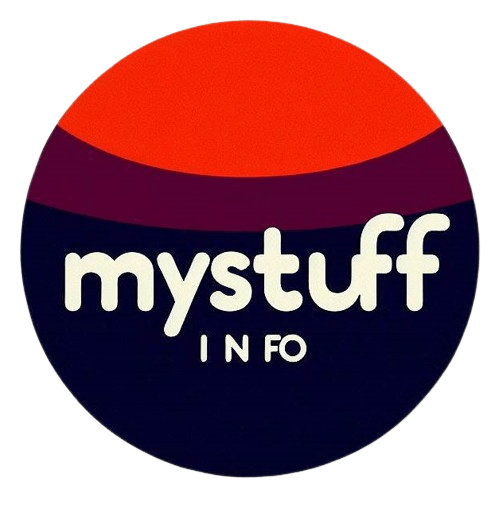When it comes to securing a child’s future, investing in their education is one of the best decisions a parent can make. Child education investment plans offer a structured way to accumulate funds over time, ensuring that educational needs are met without financial stress.
These plans provide a means to save and invest specifically for a child’s education, offering entry-age flexibility and affordable minimum premiums to cater to various financial situations.
By investing in a Child Education Investment Plan, you can secure a bright future for your child and help them achieve their educational goals. In this article, we will discuss the best investment plans for a child, so that you can make an informed decision.
Investment Account Options for Kids
If your child is younger, there aren’t many ways they can invest money on their own (except for opening a simple savings account for them). But as a parent, you can open investment accounts for them.

Putting money aside for your child’s future when they’re still little is a good idea. It can help with saving for their education and teach them about how savings grow over time. This might also mean they won’t have to borrow as much money for college later on. There are many investment accounts you can use for kids, such as:
1. Custodial Roth IRA
If your child has a part-time job and earns money, they might be eligible for a custodial Roth IRA. In this type of account, the parent who opens it takes care of the money until the child turns 18 (or 21 in some places).
Any money you put into a Roth IRA for your child can grow without being taxed. After the account has been funded for at least five years, your child can use the contributions (the money you put in) for important things like buying a car or making a down payment on a house.
If your child needs money for education expenses, they can take it out of the account, including the money it earned, without paying extra fees for taking it out early.
2. 529 Education Savings Plans
A 529 account is like a special savings plan for college. You don’t pay taxes on the money it earns if it stays in the account.
When you take the money out to pay for things like tuition, room and board, books, and school supplies, you don’t have to pay taxes on those withdrawals either. Some states also give you a break on your state taxes when you put money into a 529 account.
If you use the money for anything other than things related to education, you’ll have to pay taxes on it, plus a 10% penalty. However, if your child doesn’t end up needing the money, you can move it to another family member without facing taxes or penalties.
3. Coverdell Education Savings Accounts
Similar to 529 plans, Coverdell Education Savings Accounts are like special savings accounts for your child’s education.
The money you add to them grows without being taxed, and when you take it out to pay for things like college tuition or books, you don’t have to pay taxes on those withdrawals either.
However, unlike 529 plans, Coverdell accounts have specific rules about how much money you can put in. The most you can contribute is $2,000 per year for each child.
If your household earns a higher income, with a modified adjusted gross income (MAGI) between $95,000 and $110,000 per year (or $190,000 to $220,000 if you’re married and file taxes together), your contribution limit is reduced. If your income is above those limits, you can’t use a Coverdell account.
4. UGMA and UTMA Accounts
The Uniform Gift to Minors Act and Uniform Transfer to Minors Act (UGMA/UTMA) accounts are like special savings accounts for kids. A parent or relative starts the account for a child and takes care of it until the child grows up, usually between 18 and 25 years old, depending on the state.
The person in charge called the custodian, can add money to the account and invest it in things like stocks or bonds to make the account grow. Other family members can also add money to it.
You can take money out of the account to pay for things like college or anything else that helps the child. Once the child is old enough, usually around 18, they get control of the account and can use the money for college, buying a car, or putting it toward a home.
5. Brokerage Accounts
You don’t have to open an investment account in your child’s name. Many parents choose to open brokerage accounts in their names and use them to invest in their children’s future.
This approach has some big advantages. You keep complete control of the account, even when your child becomes an adult. This means you can make sure the money is used for the specific purpose you had in mind.
Also, you don’t have to worry about giving a large amount of money to an 18-year-old who might not be responsible enough to handle it. Using a brokerage account has another benefit – there’s no limit to what you can use the money for.
Alternative Ways to Invest for Your Kids
The accounts mentioned earlier are good for helping your child save money for the future, but if you want something safer and not too complicated, here are some other options:
High-yield savings accounts:
This is like a regular savings account, but it gives you more interest. The interest can change, but the money is safe, and you can take it out whenever you need it. You can use it for your child’s allowance and teach them about spending, saving, and sharing.
Savings bonds:
These are like special papers from the government that you buy. There are two types: EE bonds and I bonds. They give you interest for a long time (up to 30 years), and you can start with just $25. They’re safe because the government supports them. But if you take the money out before five years, you might lose some interest.
Certificates of deposit (CDs):
This is like a savings account, but it usually has rules. If you take your money out early, you might lose some interest or pay a fee. CDs are good if you want to save for something in a few years, like helping your child buy a car when they turn 18. You put the money in a CD for a certain time, and when it’s done, your child can use it.
How to Open an Investment Account for a Kid?
To open an investment account for a kid, you can follow these general steps:
Decide on the Account Type: Choose between a custodial brokerage account, custodial individual retirement account (IRA), or other appropriate account types based on your child’s financial situation and investment goals.
Choose a Broker: Find a broker that offers custodial accounts with low or no account fees and no minimum initial deposit. Also, consider the costs associated with the investments your child plans to make.
Open the Account: Provide the necessary personal and banking information, including the child’s and adult’s details, and complete the account opening process, which can usually be done entirely online in just a few minutes.
Fund the Account: Once the account is open, you can fund it with cash, stocks, mutual fund transfers, or other appropriate funding options.
Start Investing: After the account is funded, you can help the child start investing in stocks, bonds, mutual funds, ETFs, or any other suitable assets.
It’s important to note that a legal adult, such as a parent, guardian, or another trusted individual, must be involved in opening the investment account for the child, as minors are not eligible to open their brokerage accounts.
Advantages of Investing for Kids
The advantages of investing for kids include:
- Compound Interest: Investing for kids allows the money to grow faster due to compound interest, which can help accumulate more wealth over time.
- Long-Term Mindset: It instills a long-term mindset in children, as they have a longer time horizon for their investments to grow, potentially leading to greater financial security in the future.
- Financial Education: It provides an opportunity for children to learn about saving, investing, and the power of compounding returns, which can help them develop good financial habits early in life.
- Tax Benefits: Some investment accounts for kids, such as custodial accounts, may have more manageable tax implications, which can be advantageous for the child’s financial future.
- Preparation for the Future: Investing in kids can help parents prepare for their children’s future expenses, such as education, and also contribute to their retirement fund without sacrificing it for their children’s needs.
By starting to invest in children early, parents can set them on a path to financial literacy and long-term financial well-being.
FAQs
Q: What are the best investment plans for a child’s future?
Some popular options include 529 plans, custodial accounts (UGMA/UTMA), Coverdell Education Savings Accounts, and Roth IRAs.
Q: Are there tax advantages to investing in a child’s education?
Yes, accounts like 529 plans and Coverdell ESAs offer tax benefits for education savings.
Q: Can I control the investment and withdrawals in my child’s account?
Yes, with custodial accounts and some other options, parents or guardians maintain control until the child comes of age.
Q: What’s the advantage of using a brokerage account for my child’s savings?
Brokerage accounts offer flexibility and control, allowing parents to manage the investments and maintain control even as the child becomes an adult.
Q: Can I use the invested money for purposes other than education?
It depends on the type of account. Some, like 529 plans, have specific purposes, while others, like custodial accounts, offer more flexibility.






